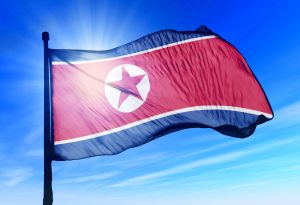North Korea has spent much of the pandemic financing its weapons programs and imports with stolen cryptocurrency. However, with trade between North Korea and China expanding in 2022, there are also signs that Pyongyang is looking to grow potential legitimate revenue streams.
While still below pre-pandemic levels, North Korea’s trade with China began to rebound last year. Exports were up just over 130 percent from 2021 levels to $134.4 million, though that’s still only about 60 percent of their pre-pandemic levels. Imports from China were up a more robust 247 percent, reaching $893.6 million, but still well below the $2.6 billion North Korea imported in 2019.
Prior to the pandemic, North Korea began to adapt to a series of U.N. sanctions put in place from 2016 and 2017 in response to its nuclear weapons and ballistic missile tests. The sanctions regime prohibited virtually all of North Korea’s leading export items. By 2018, the implementation of those sanctions had largely eliminated the export of sanctioned items to China, while exports of non-sanctioned items began to grow.
Chief among those were assembled watch movements (the engine of a watch). Prior to 2017, North Korea had not exported any watch movements, but by 2018 they were its top export to China. Other non-sanctioned items that grew pre-pandemic include molybdenum, tungsten, ferrosilicon, wigs, and fake eyelashes.
As with much of North Korea’s trade, exports of many of these items declined significantly or came to a halt during the pandemic. Exports of wigs and false eyelashes fell from $31 million in 2019 to slightly less than $375,000 by 2021, while exports of molybdenum came to a complete halt that same year. One export that broke this trend to a degree was ferrosilicon, which declined by 65.6 percent in 2020 but had recovered to near pre-pandemic levels in 2021.
It will bear watching in 2023, but exports of watch movements may be in permanent decline. After peaking at $49.2 million in 2019, they have declined each year of the pandemic and were only worth $1.8 million last year.
With trade between North Korea and China beginning to pick up, there are some exports that stand out.
With strict border control measures in place during the pandemic, North Korea increased electrical exports from the hydroelectric plants it runs with China along their mutual border. These exports were specifically carved out of U.N. sanctions in Resolution 2375 and began increasing as sanctions were implemented. They have grown significantly during the pandemic. In 2019, electrical exports to China were worth $11.4 million. By 2022, they had grown to $20.4 million (517 million kWh). Prior to the U.N. sanctions, North Korea had not exported more than $8.4 million worth of electricity.
Exports of tungsten and molybdenum are also well above their pre-pandemic levels. In 2022, North Korea exported $31 million in tungsten and $13.7 million in molybdenum to China. The previous high for tungsten was $18.5 million in 2018, while it was $9.3 million for molybdenum in 2008. Interestingly, China’s imports of tungsten from North Korea last year account for slightly less than 50 percent of China’s total imports of tungsten.
Exports of silk are another item of interest. Previously, they had not been a significant source of trade with China, but in 2022 they were North Korea’s fourth largest export item. Exports of raw silk amounted to $9.2 million last year and exports of silk waste reached $3.5 million. Prior to the pandemic, North Korea had not exported even $1 million of either product since 2013.
Carbides, or compounds of metal and carbon, are another area to watch. Prior to last year, North Korean exports of carbides to China had fluctuated and never exceeded a little less than $2 million. Last year, they jumped to $4.4 million.
All of these export items represent relatively small revenue streams, especially compared to the $163 million North Korea exported in seafood prior to sanctions – let alone the revenue generated by now-banned exports of coal or textiles. However, the significant growth in exports of tungsten and molybdenum stand out at a time when North Korea’s overall exports remain depressed, as does the potential emergence of silk and carbides as new export items. These items won’t replace the revenue generated by North Korea’s sanctioned items, but they may signal Pyongyang’s continued attempt to adapt to sanctions to find new sources of revenue.

































